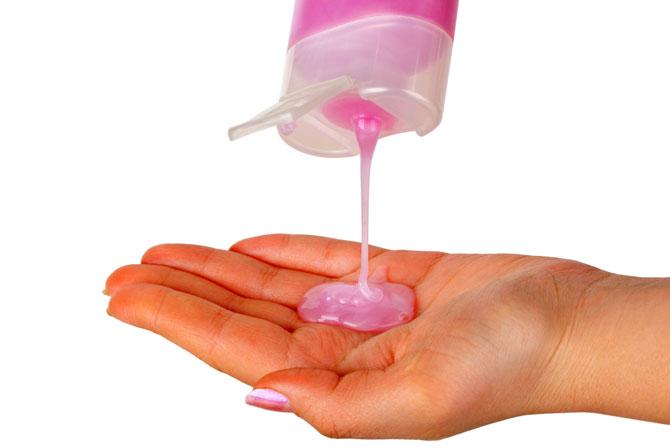Researchers, including one of Indian-origin, have found a way to create the perfect texture inside plastic bottles to let soap products flow freely, an advance that will allow even the last bit of shampoo, hand soap or laundry detergent to pour out of the bottle

Washington: Researchers, including one of Indian-origin, have found a way to create the perfect texture inside plastic bottles to let soap products flow freely, an advance that will allow even the last bit of shampoo, hand soap or laundry detergent to pour out of the bottle.
ADVERTISEMENT

Representational Picture
The technique involves lining a plastic bottle with microscopic y-shaped structures that cradle the droplets of soap aloft above tiny air pockets, so that the soap never actually touches the inside of the bottle, researchers said.
The "y" structures are built up using much smaller nanoparticles made of silica, or quartz - an ingredient in glass - which, when treated further, will not stick to soap, they said.
The solution which Bharat Bhushan and Philip Brown from Ohio State University in the US found is simpler and less expensive than alternatives under development elsewhere. It works for a common plastic used to package foodstuffs and household goods - polypropylene, they said. Coatings already exist to help food, but not soap, pour out of their containers, said Bhushan.
"Compared to soaps, getting ketchup out of a bottle is trivial. Our coating repels liquids in general, but getting it to repel soap was the hard part," he said.
The key is surface tension - the tendency of the molecules of a substance to stick to each other. Ketchup and other sauces are made mostly of water, and water molecules tend to stick to each other more than they stick to plastic, researchers said. But surfactants - the organic molecules that make soap 'soapy' - are just the opposite: they have a very low surface tension and stick to plastic easily, said Brown.
"It was an extra challenge for us to make a surface that could repel surfactant," he said. Their goal was to create a shampoo bottle lining that was cheap, effective and environmentally friendly. Soap and shampoo clean our skin and hair by bonding chemically with both oil and water, so the surface oils that were on our bodies wash off when we rinse. The same goes for dishes, researchers said.
During clothes washing, detergent performs double-duty, releasing oils and also helping water penetrate fabrics. It is that tenacity that makes the last drops of surfactant cling to the insides of bottles, they said.
Researchers came up with a method to spray-coat a small amount of solvent and ultra-fine silica nanoparticles onto the inside of bottles.
Manufacturers already use solvents to change the texture of molded plastics, because they cause the surface of the plastic to soften a little, researchers said.
By mixing the silica and solvent, they were able to soften the surface of the polypropylene just enough that when the plastic re-hardened, the silica would be embedded in the surface.
The findings were published in the journal Philosophical Transactions of the Royal Society.
 Subscribe today by clicking the link and stay updated with the latest news!" Click here!
Subscribe today by clicking the link and stay updated with the latest news!" Click here!







